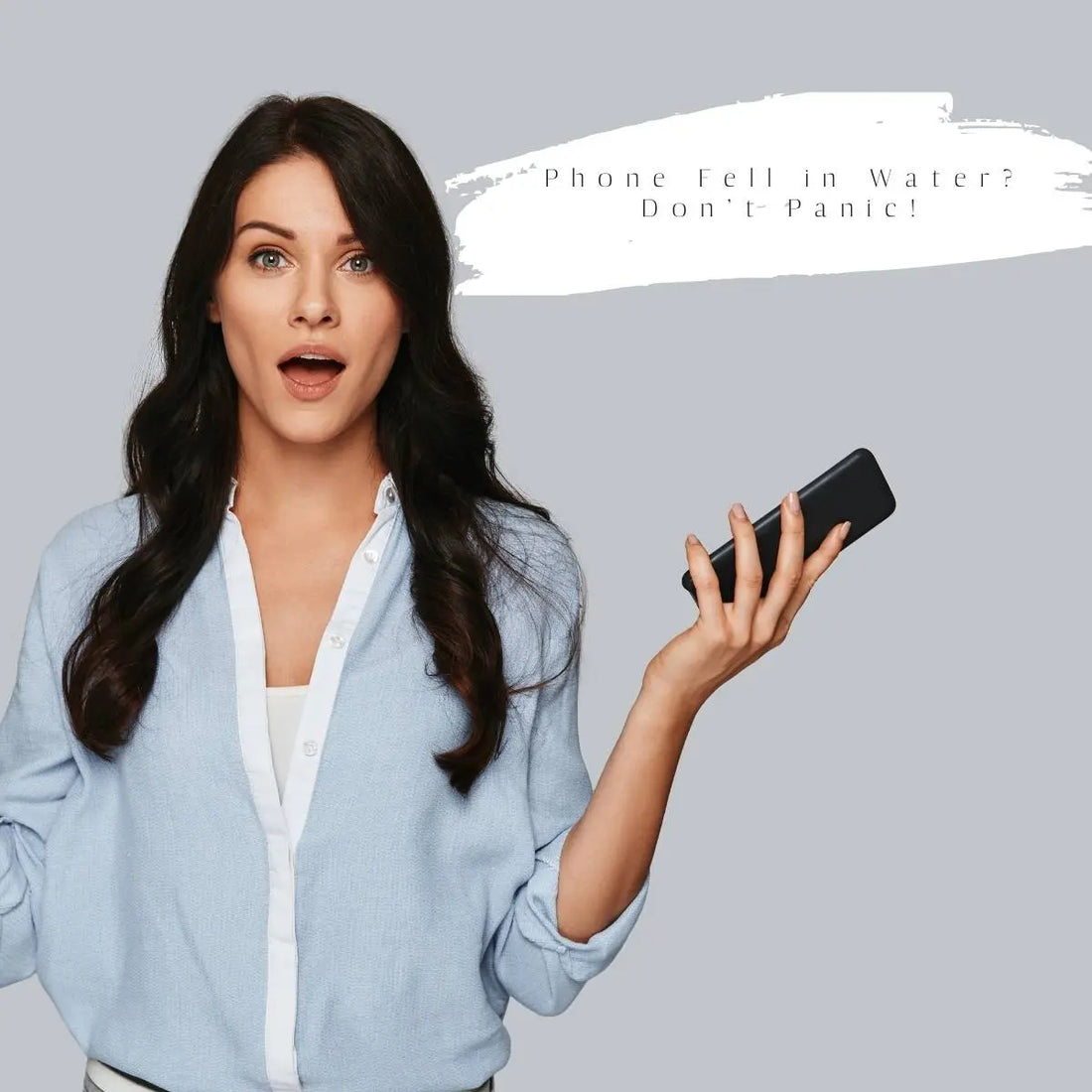
What to Do If You Drop Your Phone in Water – A Complete Guide
Share
You’re enjoying your morning coffee, scrolling through messages — and suddenly your phone slips into the cup. Or maybe you left it in your pocket during a rainy jog. It happens faster than you think, and the panic is real.
But don’t worry: a soaked smartphone doesn’t always mean the end. With the right steps (and avoiding the wrong ones), you can often rescue it. Here’s BuddyBluetooth’s survival guide for water-damaged phones.

Step 1: Stay Calm and Power It Off
The first reaction is usually to press every button to “see if it still works.” Don’t do that.
- Hold down the power button and shut it off immediately.
- If you can remove the battery — do it.
- The faster it’s off, the lower the chance of a short circuit.
Think of it like saving someone who’s fallen in a pool: step one is always to stop the danger before trying to fix the problem.

Step 2: Take Everything Out
Remove the phone case, disconnect the chargers or headphones, and remove the SIM and memory cards. This reduces the number of hiding spots for water while also protecting the accessories. Dab the area with a paper towel or soft cloth; don't rub; instead, gently push to remove the moisture.

Step 3: Forget the Myths
Here’s what you shouldn’t do (even though the internet may tell you otherwise):
- No hairdryers. Hot air can warp components and push water deeper.
- No oven, no microwave. Sounds obvious, but accidents happen.
- No frantic shaking. It only spreads the water inside.
- Skip the rice trick. Rice absorbs a little moisture, but it’s outdated and messy.

Step 4: The Right Way to Dry It
The best method? Silica gel packets — those tiny pouches you find in shoe boxes or electronics packaging. They’re designed to pull moisture out safely.
- Place the phone in a sealable container or bag surrounded by silica gel.
- Leave it for at least 24–48 hours.
- Keep the charging port facing down so gravity can help.
If you don’t have silica gel, leave the phone in a dry, well-ventilated space on a towel. Patience here is everything.

Step 5: Test, Don’t Rush
After a couple of days, reassemble the phone and try turning it on. If the screen flickers, the sound crackles, or it overheats — turn it off again and seek professional help.
Step 6: Know When to Call the Experts
Some damage isn’t visible. Corrosion can build up inside the circuits over time. If your phone acts strangely after water exposure, a repair shop can use ultrasonic cleaning to restore it. If you have insurance, call them immediately — it’s usually covered under “accidental damage.”
Can You Prevent Water Damage?
Yes — and prevention is easier than rescue:
- Invest in a waterproof case if you spend time near pools, beaches, or in the rain.
- Keep silica gel packets at home (cheap but life-saving).
- Back up your photos and files regularly so you never risk losing memories.
Final Word from BuddyBluetooth
Water accidents are stressful, but not hopeless. The key is acting quickly, avoiding myths, and using proven drying methods.
